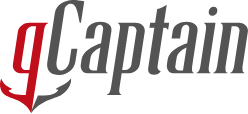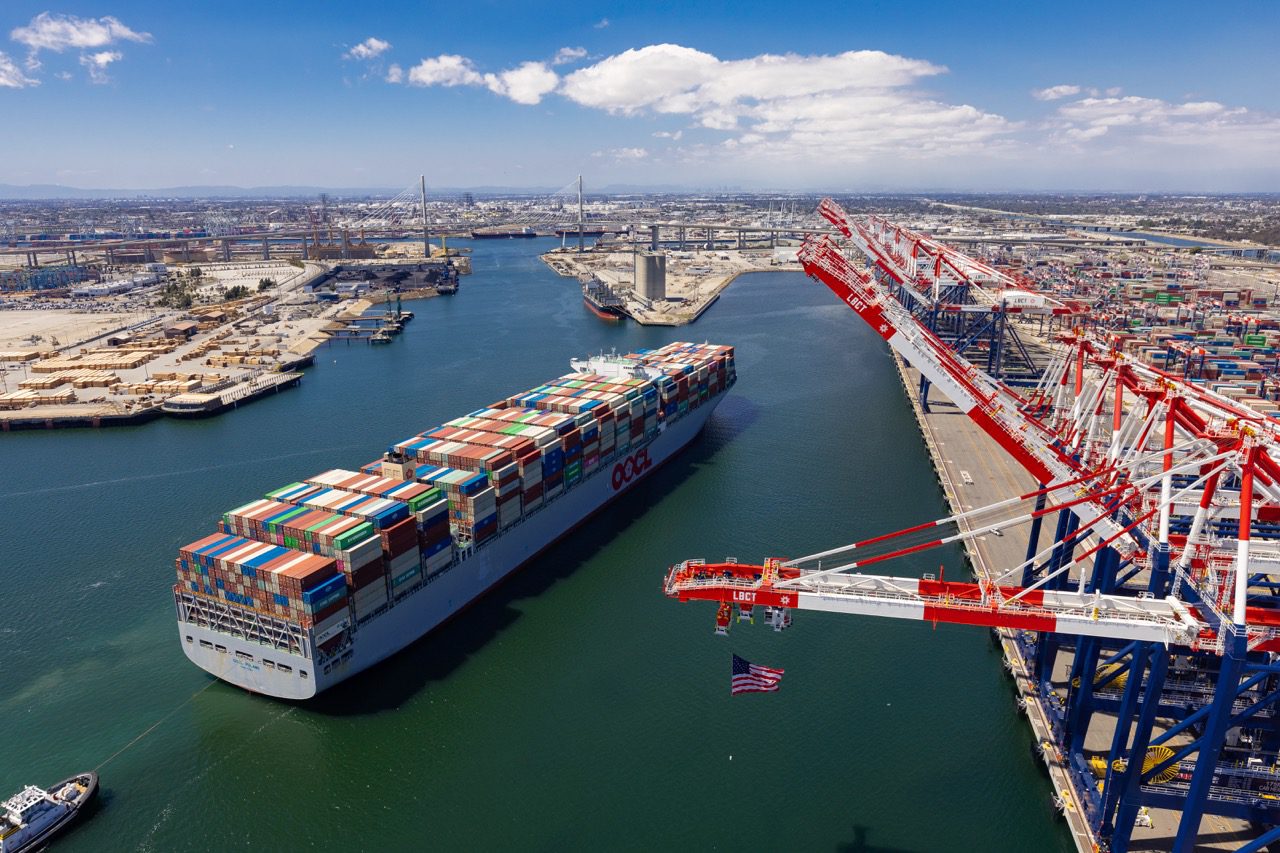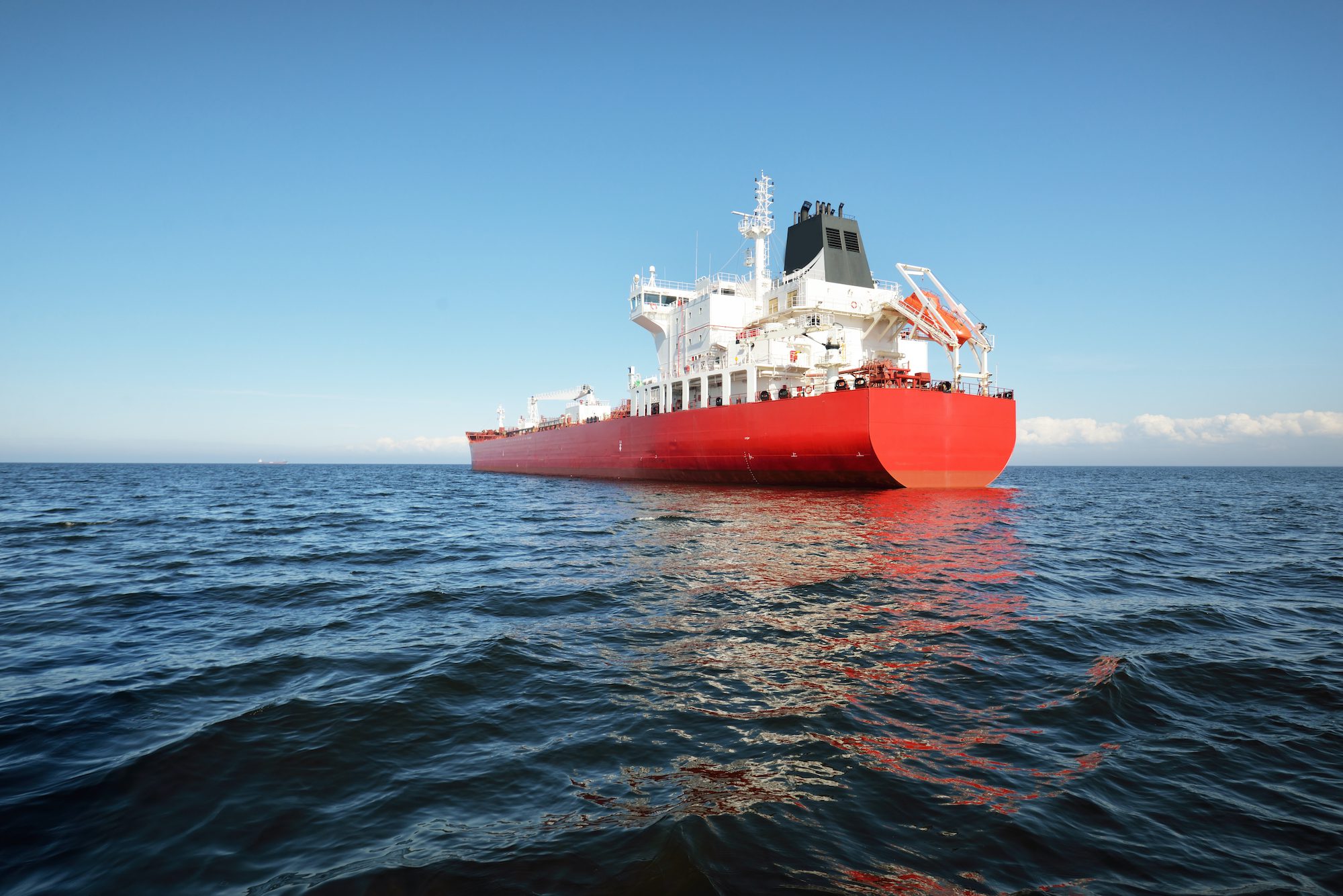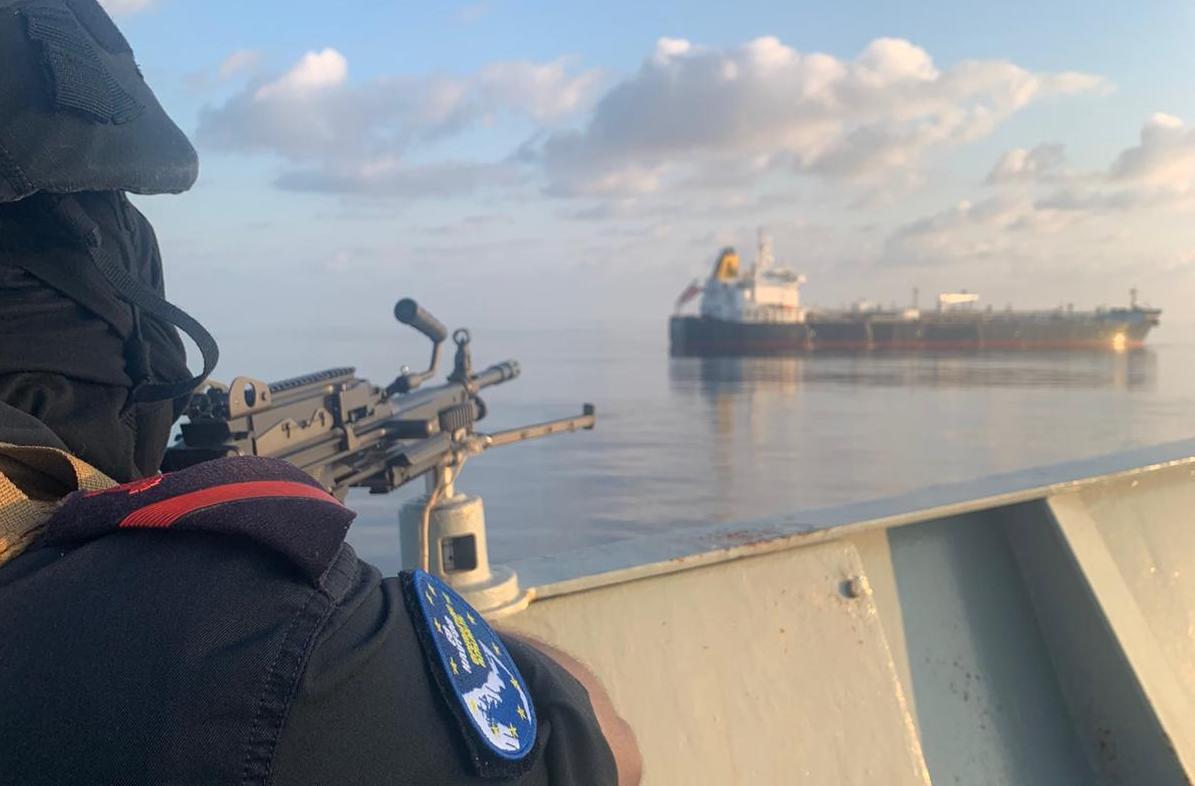Oct 22, (Reuters) – On the afternoon of March 8, a petroleum tanker named Torm Agnes entered the Port of Ensenada on Mexico’s Pacific coast carrying almost 120,000 barrels of diesel.
Such a vessel was a rare sight in that port, which mainly hosts cruise liners, luxury yachts and container ships. Ensenada lacks the infrastructure needed to unload cargos of flammable hydrocarbons safely – making what happened later that day odder still.
Waves of fuel-hauling trucks rolled up to the dock to cart away much of the Torm Agnes’ load. Workers scurried about filling the vehicles’ cavernous tanks, up to six at a time, using hoses springing from a larger hosepipe affixed to the vessel. The operation, while risky, ran like clockwork, according to an eyewitness and a photo and video from the scene shared with Reuters.
“They had a team, they were very thorough on what to do, and they were very fast,” the person said. “They worked insane hours, like through the night.”
The audacious maneuver was the work of cartel-linked smugglers, according to three Mexican security sources and three people familiar with the operation – part of a wave of bootleggers upending Mexico’s fuel market with a flood of cut-rate fuel procured mainly from the United States that’s disguised in customs declarations as something else.
The Mexican crooks didn’t act alone. A Houston company named Ikon Midstream played a key role in the multi-million-dollar Ensenada operation, Reuters has found. It purchased the diesel in Canada, claimed in paperwork it was lubricants, and chartered the tanker to deliver it to a customer that Mexican authorities allege is a front for one of the country’s largest and most violent cartels.
Ikon Midstream and its executive director, Rhett Kenagy, did not respond to multiple requests for comment. Attorney Joseph O. Slovacek, who represents the company and Kenagy, told Reuters in an October 18 email to stop contacting his clients. “No one will speak to your reporter!” Slovacek said.
The Port of Ensenada did not respond to a request for comment. Denmark-based Torm, which manages one of the world’s largest fleets of tankers, including Torm Agnes, said it stopped doing business with Ikon Midstream just weeks after the Ensenada incident.
Narcotics remain the principal money-maker for Mexico’s cartels. But illegal fuel and stolen crude oil have become the largest non-drug revenue source for these criminals, the U.S. Treasury Department says. Narcos have built this lucrative sideline by effectively embedding themselves inside North America’s vast energy sector and mastering the logistics of moving petroleum products by truck, rail and most recently tanker. Some U.S. officials have taken to calling the tankers carrying illegal fuel a new “dark fleet,” a term more often associated with illicit shipping of Russian or Iranian crude oil designed to evade sanctions.
Fuel smuggling has grown so fast that bootleg imports now account for as much as one third of Mexico’s diesel and gasoline market, swiping profits from some of the biggest names in the oil industry, five current and former Mexican government sources told Reuters. Illegal fuel entering the country is now valued at more than $20 billion a year, according to one of the people who helped Mexico’s treasury calculate the size of the illicit trade.
Law enforcement agencies on both sides of the border are alarmed. The U.S. government is offering rewards of up to $10 million for information on cartel fuel crimes. In Mexico, tanker smuggling has sparked a corruption scandal now rocking the country’s navy, which runs the ports and has long been considered one of the most trusted institutions in the country. In a September 7 press conference, the head of Mexico’s Navy, Raymundo Morales, said the institution had launched an internal investigation and “will not tolerate corruption under any circumstances.”
To uncover the inner workings of fuel smuggling into Mexico, Reuters spoke to more than 50 people with knowledge of the racket. They include five people who have had dealings in illicit cargos, Mexican and U.S. law enforcement officials, current and former oil industry executives in both countries, as well as energy traders and compliance specialists. Many of these people spoke on condition of anonymity out of fear for their safety.
Reuters is the first to publish a full account of Torm Agnes’ journey, from loading in Canada to discharging at Ensenada and at another Mexican port from which it beat a hasty retreat. The account is based on information from seven people, all of whom were either involved in the logistics of moving the cargo or are investigating the journey’s fallout, as well as tanker-tracking data and satellite images, internal shipping documents, customs data and port records.
Through those documents and sources, Reuters pieced together in previously unreported detail how the alleged scheme works and how it exploits loopholes in the vast and complex U.S. energy sector, touching a host of entities including oil majors, shipping companies and government agencies.
Aiding the cartels are U.S. players who help procure and transport the products, some unwittingly, others actively participating, authorities say. Texas State Senator Juan Hinojosa said his oil-producing state has become a hotbed for shady operators.
“The cartels have infiltrated many legitimate businesses along the border and further north,” said Hinojosa, a Democrat who sponsored legislation in March that aims to crack down on unlicensed motor fuel depots near the border, toughen regulations on fuel transporters and boost punishment for scofflaws. The bill is stalled in the Texas senate but could be revived in the future.
The fuel smuggling scheme largely boils down to a lucrative tax dodge. Mexico slaps a levy known as IEPS on a wide variety of goods, including imported diesel and gasoline. Mexico is a major crude oil producer, but it imports these fuels because its aging refineries can’t meet local demand. Crooks evade the tax, charged by the liter and often costing upwards of 50% of the cargo’s value, by declaring the foreign fuel to be some other type of petroleum product that’s exempt from the duty.
U.S. and Mexican officials say smugglers typically utilize shell companies and falsified cargo documents to cover their tracks, and they pay bribes to corrupt port and customs officials to get their shipments through.
They also unload in a hurry in dicey locations, bypassing Mexico’s nearly two dozen marine terminals set up for safe discharge of fuels, authorities and industry experts say. This allows smugglers to get the illicit cargo to their customers quickly, with minimal oversight and regulations.
Bootleg diesel is then sold at a discount in the Mexican market to thousands of unlicensed diesel stations, factories and mines. The smuggled gasoline goes mainly to unbranded filling stations. Cartels also steal fuel and crude oil outright from Pemex and sell some of it in the United States, helped by crooked importers that are undercutting American producers, the U.S. Treasury Department says.
Pemex did not respond to a request for comment about losses linked to fuel theft and smuggling.
Other oil companies are feeling the pain, too. In May, British multinational Shell disclosed the sale of its retail fuel business in Mexico. That exit was due in part to the difficulties of competing with cheaper narco fuel, five Shell sources told Reuters. Gas stations buy smuggled fuel at a discount of 5% to 10% below the price of legitimate imports, according to two sources familiar with the trade.
Shell declined to comment on its reasons for the sale.
Torm Agnes was transporting diesel it had picked up in Canada when it started its journey to Mexico, seven sources familiar with the deal told Reuters. By the time the vessel reached Ensenada, its cargo had transformed – at least on paper – into a petrochemical used to make industrial lubricants, according to cargo documents and port records reviewed by the news agency.
If that diesel, worth some $12 million, had been declared to customs authorities it would have been subject to nearly $7 million in tax when entering Mexico, according to a Reuters calculation based on the volume of diesel and the tax rate at the time. The petrochemical, however, was exempt from the levy.
Denmark-flagged Torm Agnes was one of several tankers in recent years that carried fuel but declared its cargo as lubricants to avoid taxes and customs controls, according to an undated summary of the alleged smuggling scheme from government security forces seen by Reuters. The document’s authenticity was confirmed by two security sources.
Mexico’s government has not said how much fuel smuggling has cost the country in lost IEPS revenue, but the source who used to help the treasury calculate the size of the illicit trade said it was nearly $4 billion in 2024. The opposition PAN party has put the number higher still – at around $10 billion – calling it “the largest corruption scheme in the history of Mexico.”
Neither Mexico’s tax authority nor its customs agency responded to requests for comment.
THE AMERICAN CONNECTION
At the center of that deal was a U.S. company: Ikon Midstream, a Houston-based fuel trader. The company bought the Canadian diesel and chartered Torm Agnes to deliver it to Mexico, according to four of the people and internal Ikon Midstream documents seen by Reuters.
In addition to the shipment to Ensenada, Ikon Midstream arranged at least four other maritime deliveries of diesel to Mexico this year, Reuters learned. Between January 8 and March 4, the company used a different tanker from the same fleet – Torm Louise – on four separate occasions to carry cargo from Texas to the Port of Tampico on Mexico’s Gulf Coast, according to tanker-tracking data and shipping company Torm, which manages both the Torm Agnes and Torm Louise vessels.
Torm told Reuters that both tankers were loaded with diesel. It added that Torm Louise in three of its journeys also carried naphtha. In Mexico, bootleggers frequently use that highly flammable hydrocarbon to make low-quality gasoline.
In declarations to Mexican customs, however, Ikon Midstream said all five shipments were “additives for lubricants” not subject to IEPS, according to Mexican port records obtained by Reuters through freedom of information requests.
The product that was declared on U.S. export bills of lading for two of the Torm Louise shipments was likewise lubricants, according to Kpler, a marine data provider based in Brussels. Reuters is the first to report that Ikon Midstream labeled these diesel shipments as lubricants in U.S. customs declarations.
Kpler said it was not able to share the source documents due to confidentiality agreements with its data providers.
U.S. Customs and Border Protection (CBP), which holds copies of these documents, initially declined a June freedom of information request from Reuters seeking to obtain them. In October, CBP said the information sought by Reuters was available in paper cargo manifests that would need to be requested in person at each port of export, a process the agency described as “time-consuming” and subject to further delays.
Torm in an August 5 email said it was not responsible for nor involved in completing customs paperwork for the shipments. All the documents it received from Ikon Midstream, Torm said, consistently declared the products being transported on its tankers to be “ULSD and/or naphtha.” ULSD is an industry acronym for ultra-low sulfur diesel. Torm declined to share with Reuters the documents it said it had received from Ikon Midstream, citing contractual obligations.
“Based on what has come to light, we have decided not to engage in further business with Ikon Midstream,” Torm said without elaborating in an August 27 email to Reuters. Torm broke off commercial relations with Ikon Midstream at the start of April and canceled two future contracts with the company, a Torm spokesperson said in a follow-up email to the news agency on September 5.
As part of Reuters’ efforts to seek comment from Ikon Midstream, a reporter stopped by the company’s Houston headquarters in August but was turned away by a person who said he worked for Ikon Midstream and gave his name only as Daniel.
Kenagy, like many executives involved in the trillion-dollar plus global oil trade, projects an image of success. Earlier this year, he bought a Houston mansion and grounds valued at more than $6 million, local property records show. His Instagram feed is peppered with images of sports cars, exotic motorcycles and private jets.
He and his wife, Janelle Alexis Flatt, appeared in a 2022 episode of the reality TV show Below Deck Sailing Yacht, which chronicles the lives of crew members aboard a luxury vessel and their experiences with guests who charter it.
Flatt did not respond to requests for comment.
Kenagy is also a registered agent for at least a half-dozen businesses that no longer are operational, including ventures in mining, construction and entertainment, Texas business records show.
In Mexico, a Monterrey-based company named Intanza was the recipient of the Torm Agnes’ cargo, according to Mexican port records as well as an invoice for the Torm Agnes shipment viewed by the news agency.
Mexican authorities suspect Intanza is a front company for the Jalisco New Generation Cartel, according to three Mexican security sources and a second undated document from government security forces seen by Reuters outlining cartel ties to fuel smuggling.
Intanza has no website and no social media presence that Reuters could identify. A letter sent by Reuters to the Monterrey address listed for Intanza in the invoice could not be delivered because the courier service could find no presence of the company there.
Intanza’s name surfaced again after Mexican authorities apprehended another tanker, Challenge Procyon, on March 21 at the Port of Tampico in Tamaulipas state. Intanza on March 27 filed a claim in a Tamaulipas court asking a judge to release that shipment, which it claimed was lubricants and wrongfully seized; the judge rejected Intanza’s request. Mexico’s Security Minister Omar García Harfuch in a March 31 social media post said that 10 million liters (about 63,000 barrels) of diesel had been found aboard Challenge Procyon.
Last month, García Harfuch declared that seizure to be “one of the largest in history” as he announced the arrest of 14 people, including business executives, former customs officials, and active and retired naval officials as part of investigations into Challenge Procyon and other alleged fuel smuggling. The government identified those apprehended only by their first names, as is customary in Mexico.
Mexico’s Navy and the Attorney General’s office said they could not comment on ongoing investigations and pointed Reuters to public statements on the issue. The security ministry did not respond to a request for comment.
Ramiro Rocha, listed as Intanza’s legal representative in Mexico’s official companies registry, said he has no involvement with the company and may have been a victim of identity theft.
A CARTEL SETS SAIL
Small-time thieves for decades have filched gasoline, diesel and crude oil from Pemex. Over time, as the trade grew in scale and profitability, it attracted the involvement of Mexico’s cartels. But the Jalisco New Generation Cartel has taken the scheme to a new level and is the unquestioned leader in fuel and crude oil smuggling, according to Mexican and U.S. security sources.
The cartel, whose home territory is the central-western state of Jalisco, has expanded across Mexico. Authorities say it has built a formidable smuggling operation in the northern state of Tamaulipas just across the Texas border. From there, they say, it sends stolen Mexican crude oil to the United States and brings U.S. refined products to Mexico by truck, rail and tanker. They said CJNG, as it’s known by its Spanish initials, is the only cartel currently employing tankers.
Authorities first detected smuggling by tanker around 2020, according to a 2021 Mexican government document viewed by Reuters outlining initial investigations into the scheme, which at the time did not attribute this development to a specific cartel.
The jump to tankers from trucks and trains reflects a degree of business savvy and investment power that’s in a different league than what has come before, said Marisol Ochoa, an expert on organized crime at Mexico’s Ibero-American University.
“You have to have a high level of sophistication and extensive networks and connections in operational logistics,” she said.
Since September 2024, the U.S. Department of the Treasury’s Office of Foreign Assets Control (OFAC) has issued two rounds of sanctions against a dozen Mexican nationals and nearly 30 Mexican companies allegedly linked to CJNG and its fuel theft and smuggling operations.
Greg Gatjanis, a former top OFAC official, said he was “stunned at the array of companies” connected to the alleged scheme. The enterprises include gas stations, transport firms, a 3D printing company and a baguette bakery, according to OFAC.
The Trump administration in February designated several Mexican cartels, including CJNG, as foreign terrorist organizations. That mobilized more personnel and resources for the anti-cartel fight and made it easier for U.S. prosecutors to go after individuals and companies doing business with these groups.
In May, a father and son from Utah – James Lael Jensen and Maxwell Sterling Jensen – were charged with conspiracy to commit money laundering and provide material support to a designated foreign terrorist organization. Authorities allege the Jensens worked with CJNG to smuggle crude oil into the U.S.
Lawyers for James Jensen did not respond to a request for comment. Robert Guerra, a lawyer representing Maxwell Jensen, declined to comment.
U.S. officials also met with refiners in the Houston area this year to explain the involvement of Mexican organized crime in the fuel business and to stress the importance of knowing their suppliers and customers, three industry sources and a U.S. official said. That official told Reuters that violators of U.S. sanctions up and down the supply chain could face civil and criminal penalties.
That presents “an enormous business risk” for U.S. players given the success of cartels in using front companies and intermediaries to do their dirty work, said Gatjanis, the former OFAC official.
In Mexico, the scale and increasing sophistication of fuel smuggling have spawned allegations that senior politicians are involved.
In last year’s presidential campaign, opposition candidate Xóchitl Gálvez accused the ruling Morena party of receiving funds from Sergio Carmona, a Tamaulipas businessman referred to by the Mexican press as the “The King of Illegal Fuel.” Carmona was a major trafficker linked to the Gulf Cartel and the Northeast Cartel, according to Mexican media reports. He was shot dead in a barbershop in northern Mexico by unknown assailants in 2021. No one has been arrested in his killing.
Carmona allegedly helped fund Morena election campaigns, including that of former President Andrés Manuel López Obrador who won Mexico’s highest office in 2018, according to the second undated document from government security forces reviewed by Reuters.
Neither López Obrador nor Morena responded to requests for comment.
Mexican President Claudia Sheinbaum, of the Morena party, has made combating fuel smuggling and crude oil theft a security priority for her administration.
“We will not protect anyone,” Sheinbaum said in a July 8 press conference when asked about the alleged involvement of politicians in the illicit trade. Her office did not respond to a detailed list of questions for this story.
Since Sheinbaum took office in October 2024, authorities say they’ve seized around 500,000 barrels of allegedly illegal fuel and crude oil – more than the previous government nabbed over its whole six-year term. That’s barely a trickle in the torrent of bootleg fuel entering the country. Still, the fight is proving dangerous.
On August 4, Ernesto Vázquez, federal prosecutor for the state of Tamaulipas, was killed after his armored SUV was hit by an incendiary grenade on a busy street in the city of Reynosa. Footage broadcast on national television showed Vázquez escaped the burning vehicle, only to be shot from a nearby car.
In a statement the following day, the Attorney General’s office said the killing likely was the work of organized crime after the government in late July seized more than 1.8 million liters (about 11,300 barrels) of illegal fuel, trucks, pumps and other equipment in Reynosa, just across the border from McAllen, Texas.
A PAPER TRAIL OF TAX EVASION
Trading crude oil and fuel often entails a complex chain of custody. Transactions can involve multiple buyers, sellers and middlemen. Import-export paperwork is often incomplete or outright faked by bad actors, trade experts and law enforcement officials told Reuters.
Torm Agnes began loading from the Vancouver Wharves marine terminal in Canada on March 2, according to marine data provider Kpler. The tanker took on about 120,000 barrels of cargo, Kpler calculated, based on data transmitted by the tanker showing how low it sat in the water. Seven sources familiar with the deal confirmed it loaded diesel.
That diesel came from Imperial Oil, a Canadian oil company that’s majority-owned by ExxonMobil, according to four of the people.
Imperial Oil did not respond to a request for comment. ExxonMobil declined to comment.
Shipping documents viewed by Reuters told a different story about what was on the vessel. A February 28 invoice, bearing Ikon Midstream’s logo and Houston address, claimed the cargo was lubricants, not diesel, and that it had been sold to Intanza. The stated value was $1.3 million, or about one-tenth of the value of 120,000 barrels of diesel at the time. A cargo manifest viewed by Reuters likewise showed the cargo was lubricants loaded in Vancouver on Torm Agnes for delivery to Mexico, with Ikon Midstream as the shipper and Intanza as the recipient.
Mexico in recent years has seen erratic spikes in declared imports of lubricants, a development the government has linked to smuggling. The nation’s tax authority in a 2022 document said these products are “used as a means of tax evasion” because they’re not subject to IEPS.
Demand in Mexico for so-called base oil lubricants is a modest 1 million tons per year, according to Michael Connolly, head of refining and base oils analytics at commodities information provider ICIS. Yet official U.S. trade data shows the country exported as much as 3.5 million tons to Mexico last year, a figure Connolly says doesn’t add up.
“There’s just a significantly higher level of imports going in there than what we would expect,” he said.
Ikon Midstream alone declared that it shipped lubricants from the U.S. to Mexico 149 times between October 11, 2019, and May 4, 2025, with 67 of those loads coming via tanker, according to trade data compiled for Reuters by trade technology company Altana.
Intanza, the Mexican customer for Torm Agnes’ cargo, has a slew of business objectives, ranging from alcoholic beverage production to scientific research, according to Mexico’s companies registry.
Its Monterrey address, according to the shipping invoice, is a unit in a two-story residential apartment complex next to a daycare center. When a Reuters reporter visited the address, they saw no signage for Intanza.
Rocha, Intanza’s listed representative, lives in a working-class neighborhood about 40 kilometers (25 miles) outside the city, according to his address on file in the registry.
The gray-haired Rocha became a minor online celebrity in recent years by posting videos of himself falling asleep in random places. Fans nicknamed the short, stocky Rocha “Don Pug.” His popularity surged anew in February when on social media he denied press reports that he had died of a heart attack during a lap dance at a Monterrey strip club.
Rocha told Reuters he works as a security guard, has nothing to do with Intanza, and that data listed for him in the registry, including his address and three forms of identification, might have been stolen.
A SMOOTH OPERATION, THEN A SCRAMBLE
On the afternoon of March 8, Torm Agnes entered the Port of Ensenada. Within hours, the queue of fuel-hauling trucks stretched the length of the dock and well outside the terminal, said the eyewitness to the operation.
Some of these vehicles bore the logo of a trucking company named Mefra Fletes, according to the eyewitness and a photograph of the scene viewed by Reuters.
Ikon Midstream and Mefra Fletes have worked together on tanker-to-truck fuel transfers in at least three different Mexican ports in recent years, two sources familiar with the operations said. The employee at Ikon Midstream’s Houston headquarters in August who identified himself as Daniel told a Reuters reporter that he used to work with Mefra Fletes in Mexico.
Mefra Fletes was incorporated in 2015 in Guadalajara, the capital of Jalisco state, and is focused on transporting petroleum products, according to Mexico’s companies registry. There was no address or contact information in the registry for the company or for Roberto Blanco, who is listed as the majority owner. Reuters could find no website or social media presence for Mefra Fletes.
Reuters received no reply to a letter sent by courier with detailed questions for Blanco to a Jalisco address for Mefra Fletes printed on one of its trucks. Reporters were unable to locate the company’s legal representative, Mario Castro.
Torm Agnes unloaded much of its cargo, but not all of it, in Ensenada. From there, the tanker headed to the Port of Guaymas in the Gulf of California and again discharged straight into fuel trucks starting on March 20, according to photographs and videos of the operation viewed by Reuters. Some of those vehicles bore the Mefra Fletes insignia, the images showed.
But Torm Agnes managed to unload only about half of the cargo it had planned to discharge there, according to internal port emails seen by Reuters. Instead, it left Guaymas abruptly the following day, according to tanker-tracking data and three people familiar with the situation. Workers helping to offload the diesel quickly packed up their equipment, and fuel trucks sped from the port, the people said.
The exodus caused a stir locally. Photos and videos shared on social media showed a dozen fuel tanks detached from the trucks that brought them and abandoned in nearby parking lots and along the roadside.
Security sources told Reuters they suspect Torm Agnes took off after word spread at the Port of Guaymas that Mexican authorities were seizing another tanker, Challenge Procyon, that same day, March 21, in the Port of Tampico.
Torm did not comment on the reason for Torm Agnes’ hasty departure. The Port of Guaymas did not respond to a request for comment.
On March 28, Mexican authorities in a press release announced they had seized some 50,000 barrels of petroleum products stored haphazardly in about 100 containers in a dusty lot in the town of El Sauzal, around 10 kilometers north of the Port of Ensenada. Security forces also seized equipment and fuel trucks. Video footage from the raid broadcast by Mexican media showed Mefra Fletes trucks.
The seized petroleum products likely came from the Port of Ensenada and arrived by tanker, according to an undated summary of the case by Mexican security forces viewed by Reuters. The document did not mention Torm Agnes, but two Mexican security sources confirmed that the tanker’s activity in Ensenada is under investigation.
Anuar González, a former legal representative for Mefra Fletes, was apprehended in August. An arrest warrant has been issued for Blanco, the company’s majority owner. Both are suspected of involvement in the illegal fuel trade, according to one of the Mexican security sources and press reports.
Reuters couldn’t determine whether González has a lawyer. Blanco remains at large.
(Reporting by Stefanie Eschenbacher in Tampico, Mexico, Shariq Khan in Houston and Stephen Eisenhammer in Mexico City.Additional reporting by Laura Gottesdiener in Monterrey, Mexico; Pola Grzanka and Monica Naime in Mexico City; Alicia Fernández in Tampico; Liz Hampton in Denver; and Amanda Stephenson in Toronto.Editing by Marla Dickerson and Richard Valdmanis)
(c) Copyright Thomson Reuters 2025.

 Join The Club
Join The Club











